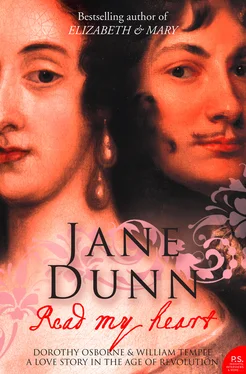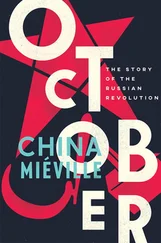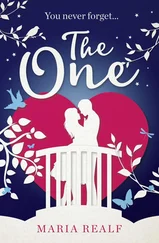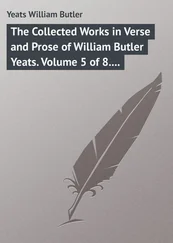Through letters and memoirs their words draw us into their lives and illuminate the extraordinary times in which they lived: ‘Read my heart,’ Dorothy wrote as she laid her hopes before him and William too claimed his writing to her was ‘a vent for [my feelings] and shewd you a heart wch you have so wholly taken up’. Their clear voices tell us the story of that grand romance of thwarted passion, conniving families, ridiculous acquaintances, disease and disappointments, together with major political achievements and the fulfilment of love – all lived out in an age of revolution. *
*The first performance was given in 1966 at Goldsmith’s Hall, London, with the mezzo-soprano Janet Baker singing as Dorothy with the refrain ‘Shall we ever be so happy?’
*I hope my use of footnotes in the pages that follow will illuminate rather than distract from the story. There are so many fascinating bit players on this stage I could not allow them to crowd the narrative in their full distinction but equally was loath to let them pass without note.
CHAPTER ONE
Can There Bee a More Romance Story Than Ours?
All Letters mee thinks should bee free and Easy as ones discourse not studdyed, as an Oration, nor made up of hard words like a Charme
DOROTHY OSBORNE [to William Temple, September 1653]
as those Romances are best whch are likest true storys, so are those true storys wch are likest Romances
WILLIAM TEMPLE [to Dorothy Osborne, c. 1648–50]
THE ROMANCE BEGAN in the dismal year of 1648. It was much wetter than usual with an English summer full of rain. The crops were spoiled, the animals sickened ‘and Cattell died of a Murrain everywhere’. 1 The human population had fared no better. The heritage of Elizabeth I’s reign had been eighty years of peace, the longest such period since the departure of the Romans over twelve centuries before. After this, the outbreak of civil war in 1642 had come as a severe shock. Few had remained unscathed. By the time the crops failed in 1648, the first hostilities of the civil war were over but the bitterness remained. The nightmare of this domestic kind of war was its indistinct firing lines and the fact the enemy was not an alien but a neighbour, brother or friend. The rift lines were complex and deep. Old rivalries and new opportunism added to the murderous confusion of civil war. Waged in the name of opposing interests and ideologies, the pitiful destruction and its bitter aftermath were acted out on the village greens and town squares, in the demesnes of castles and the courtyards of great country houses.
One of the many displaced by war was the young woman, Dorothy Osborne. She was twenty-one and in peaceful times would have been cloistered on her family’s estate in deepest Bedfordshire awaiting an arranged marriage with some eligible minor nobleman or moneyed squire. Instead, she was on the road with her brother Robin, clinging to her seat in a carriage, lurching on the rutted track leading southwards on the first leg of a journey to St Malo in France, where her father waited in exile. Low-spirited, disturbed by the catastrophes that had befallen her family, Dorothy could not know that the adventure was about to begin that would transform her life.
Dorothy’s family, the Osbornes of Chicksands Priory near Bedford, was just one of the many whose lives and fortunes were shaken and dispersed by this war. At its head was Sir Peter Osborne, a cavalier gentleman who had unhesitatingly thrown in his lot with the king when he raised his standard at Nottingham in August 1642. Charles’s challenge to parliament heralded the greatest political and social turmoil in his islands’ history. And Sir Peter, along with the majority of the aristocracy and landed gentry, took up the royalist cause; in the process he was to lose most of what he held dear.
Dorothy was the youngest of the Osborne children, a dark-haired young woman with sorrowful eyes that belied her sharp and witty mind. When war first broke out in 1642 she was barely fifteen and her girlhood from then on was spent, not at home in suspended animation, but caught up in her father’s struggles abroad or as a reluctant guest in other people’s houses. After the rout of the royalist armies in the first civil war, the Osborne estate at Chicksands was sequestered: the family dispossessed was forced to rely on the uncertain hospitality of a series of relations. Being the beggars among family and friends left Dorothy with a defensive pride, ‘for feare of being Pittyed, which of all things I hate’. 2
By 1648 two of her surviving four brothers had been killed in the fighting, and circumstances had robbed her of her youthful optimism. Her father had long been absent in Guernsey. He had been suggested as lieutenant governor for the island by his powerful brother-in-law Henry Danvers, Earl of Danby, who had been awarded the governorship for life. To be a royalist lieutenant governor of an island that had declared for the parliamentarians was a bitter fate and Sir Peter and his garrison ended up in a prolonged siege in the harbour fortress of Castle Cornet, abandoned by the royalist high command to face sickness and starvation. Dorothy, along with her mother and remaining brothers, was actively involved in her father’s desperate plight and it was mainly the family’s own personal resources that were used to maintain Sir Peter and his men in their lonely defiance.
Camped out in increasing penury and insecurity at St Malo on the French coast, his family sold the Osborne silver and even their linen in attempts to finance provisions for the starving castle inmates. When their own funds were exhausted, Lady Osborne turned to solicit financial assistance from relations, friends and reluctant officials. Often it had been humiliating and unproductive work. Dorothy had shared much of her mother’s hardships in trying to raise funds and both had endured the shame of begging for help. These years of uncertainty and struggle took their toll on everyone.
Dorothy’s mother, never the most cheerful of women, had lost what spirits and health she had. She explained her misanthropic attitude to her daughter: ‘I have lived to see that it is almost impossible to believe people worse than they are’; adding the bitter warning, ‘and so will you.’ Such a dark view of human nature expressed forcefully to a young woman on the brink of life was a baleful gift from any mother. Lady Osborne also criticised her daughter’s naturally melancholic expression: she considered she looked so doleful that anyone would think she had already endured the worst tragedy possible, needing, her mother claimed, ‘noe tear’s to perswade [show] my trouble, and that I had lookes soe farr beyond them, that were all the friends I had in the world, dead, more could not bee Expected then such a sadnesse in my Ey’s’ [she could not look any sadder]. 3
So it was that this young woman, whose life had already been forced out of seclusion, set out with her brother Robin in 1648 for France. Dorothy recognised the change these hardships had wrought, how pessimistic and anxious she had become: ‘I was so alterd, from a Cheerful humor that was always’s alike [constant], never over merry, but always pleased, I was growne heavy, and sullen, froward [turned inward] and discomposed.’ 4 She had little reason to expect some fortunate turn of fate. More likely was fear of further loss to her family, more danger and deaths and the possibility that their home would be lost for ever.
An arranged marriage to some worthy whose fortune would help repair her own was the prescribed goal for a young woman of her class and time. Dorothy had grown up expecting marriage as the only career for a girl, the salvation from a life of dependency and service in the house of some relation or other. But it was marriage as business merger, negotiated by parents. Love, or even liking, was no part of it, although in many such marriages a kind of devoted affection, even passion, would grow. She struggled to convince herself it was a near impossibility to marry for love: ‘a happiness,’ she considered, ‘too great for this world’. 5
Читать дальше












